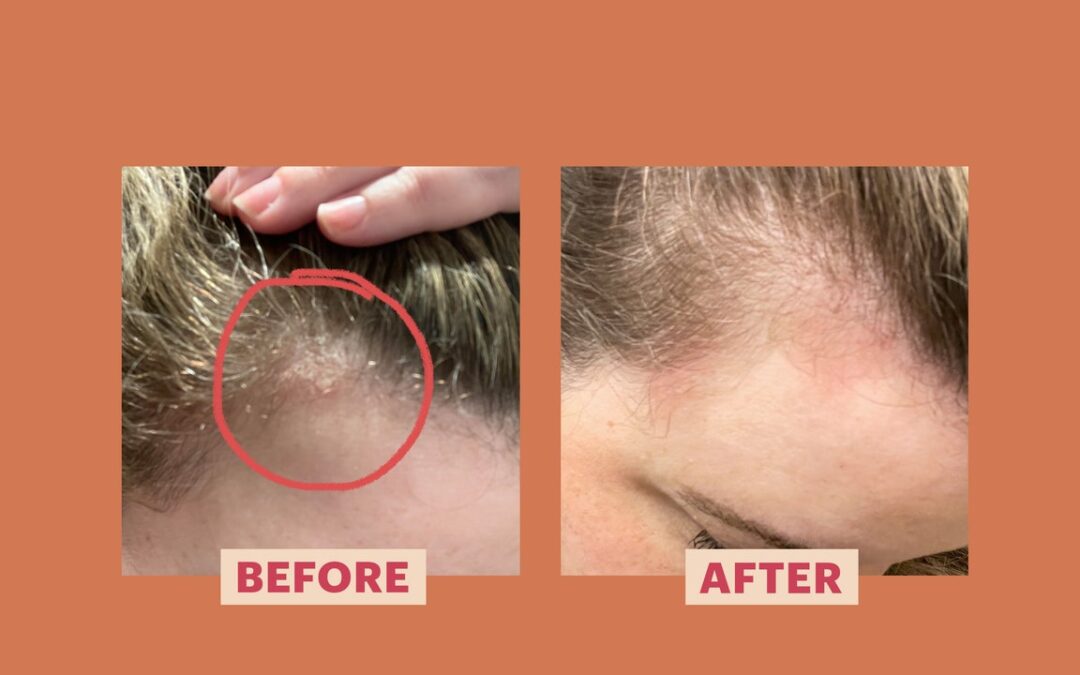Before I saw Dr. Samolitis, I had sort of self-diagnosed my scalp psoriasis. My flaky scalp looked like the scalp psoriasis images I had seen on Google and wasn’t responding to typical dandruff treatments. But, I thought, it could also be a bad case of seborrheic dermatitis, another scalp condition with similar scaly patches.
When I see Dr. Samolitis, she notes that it doesn’t really matter which one it is because the treatment is generally the same. She can send me for a biopsy to find out for sure, but cutting into the scalp is really only warranted in extreme cases.
“Classic scalp psoriasis is usually very well-demarcated,” Dr. Samolitis explains, meaning that it has very clear edges. “It’s usually thicker and scaly [compared to seborrheic dermatitis].” Those with seborrheic dermatitis often see smaller flakes all over their scalp, with a concentration along the hairline, as well as in areas like the brows or a beard. “Scalp psoriasis is often not itchy, while seborrheic dermatitis is often itchy,” adds Karan Lal, DO, MS, FAAD, a board-certified dermatologist in Scottsdale, Arizona, with whom I spoke to get another take.
Dr. Samolitis says my condition seems like a mild form of scalp psoriasis, but we can also call it “sebopsoriasis,” a term dermatologists use when it could be either condition. “If you had it on your elbows, knees, and palms, and nail pitting and arthritis, that’s a classic case of psoriasis.” If it’s just on the scalp, it could go either way. Again, the exact diagnosis isn’t essentially important. “When we assess scalp scaliness, we usually do so by assessing response to treatment,” says Dr. Lal.
After I learn this, I show Dr. Samolitis the red patches in both of my armpits. Surprise! I had seen my primary care doctor about it and she thought it was possibly an overabundance of yeast after starting a new workout. Given the combination of my scalp and armpits, Dr. Samolitis explains, it’s more likely inverse psoriasis, which some psoriasis patients get in areas where skin rubs together, such as the groin and armpits. The patches are in both of my armpits, in similar areas. Dr. Samolitis adds, “Symmetry is another feature of psoriasis.” And let me tell you, these red patches itch.
How Scalp Psoriasis Is Treated
The treatment for any scalp condition can be a bit of trial and error. Those with seborrheic dermatitis should try an antifungal dandruff shampoo, such as Selsun Blue or Nizoral (the active ingredients in each are selenium sulfide and ketoconazole, respectively), which treats the fungus and yeast that’s causing inflammation. But I had tried both products with no real success, which made me think I was dealing with psoriasis, an immune system problem that causes skin cells to grow too fast. There isn’t any one reason for this condition; it’s likely genetics and environmental factors (such as smoking, drinking alcohol, and taking certain medications) play a part.

